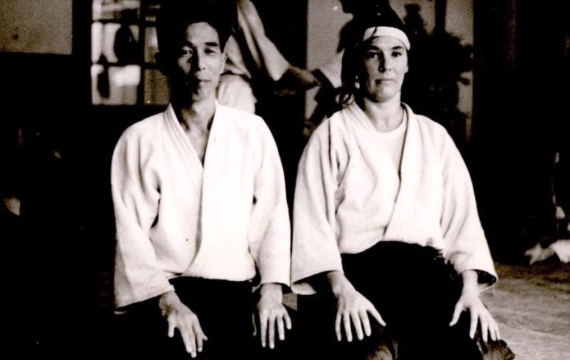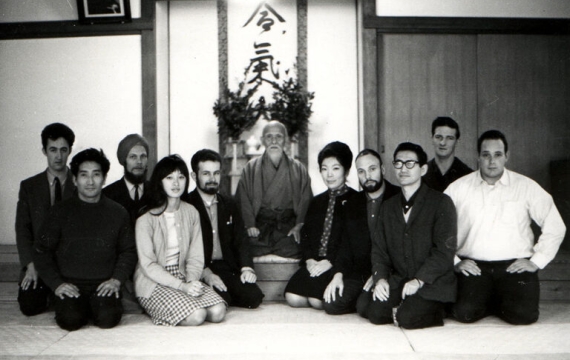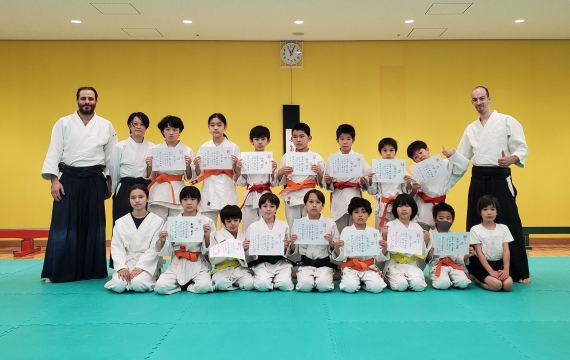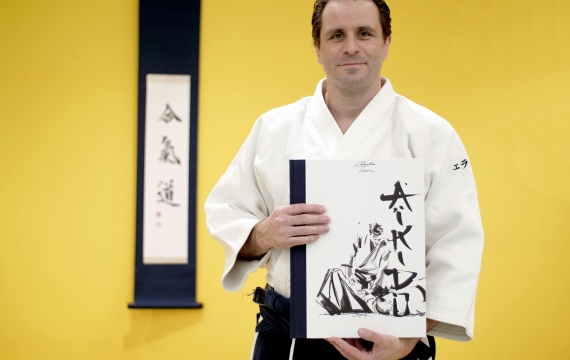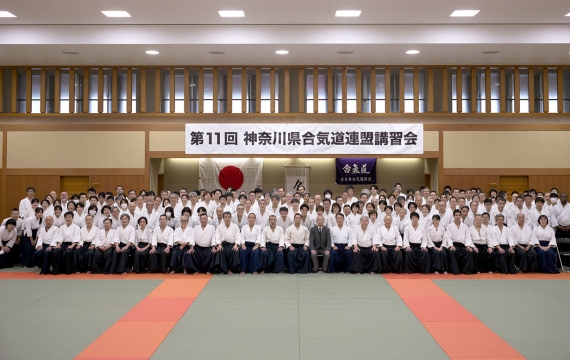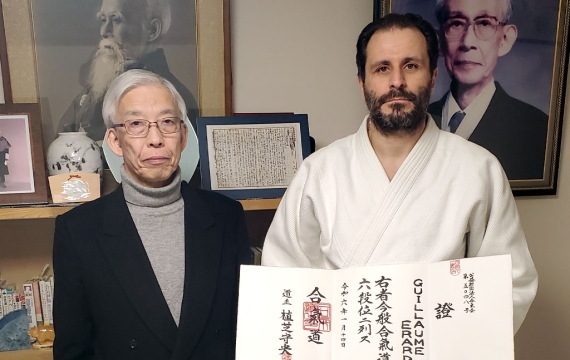基本技
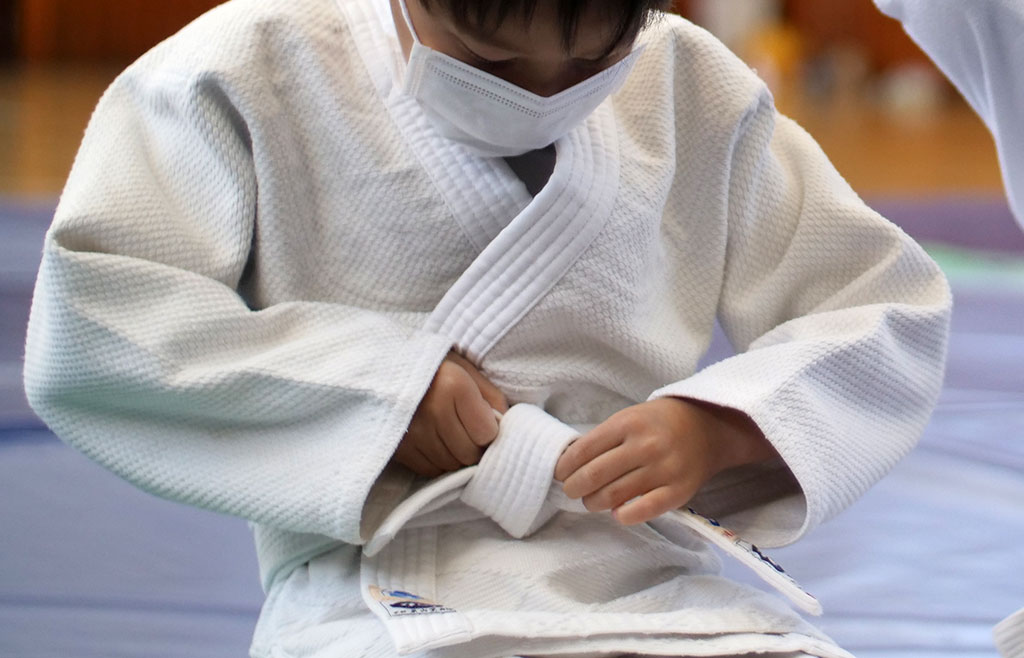
基礎知識
Basics of practice
How to tie your belt?
The belt is used to maintain the side of the vest closed. The standard type is that used for judo practice, even though some people like to use traditional obi (帯) instead.
How to tie your hakama?
The hakama (袴) consists in a pair of large pants, which were traditionally worn for horseriding. In Aikido, the hakama is often worn from 1st kyu by men, and 3rd kyu by women.
How to sit in seiza and bow?
Reishiki is composed of two characters (礼式) which mean respectively "ceremony" and "gratitude". It expresses in the most concrete terms our sense of duty, towards each other.
Some people "use" budo, as in the sense of buki, where ki means "tool". They "use" thsi tool to become stronger, or to move up in the hierarchy in order to eventually "use" others. However, being in a budo is the opposite, you have to "serve" others. The word samurai comes from "serving" (侍う), serving one's art, serving one's master, serving one's peers, one's elders but also one's juniors (in Japan, having one or more kohai is a very demanding responsibility). Budo is a path, not a tool, and etiquette reminds us of that at all times.
Some people "use" budo, as in the sense of buki, where ki means "tool". They "use" thsi tool to become stronger, or to move up in the hierarchy in order to eventually "use" others. However, being in a budo is the opposite, you have to "serve" others. The word samurai comes from "serving" (侍う), serving one's art, serving one's master, serving one's peers, one's elders but also one's juniors (in Japan, having one or more kohai is a very demanding responsibility). Budo is a path, not a tool, and etiquette reminds us of that at all times.





